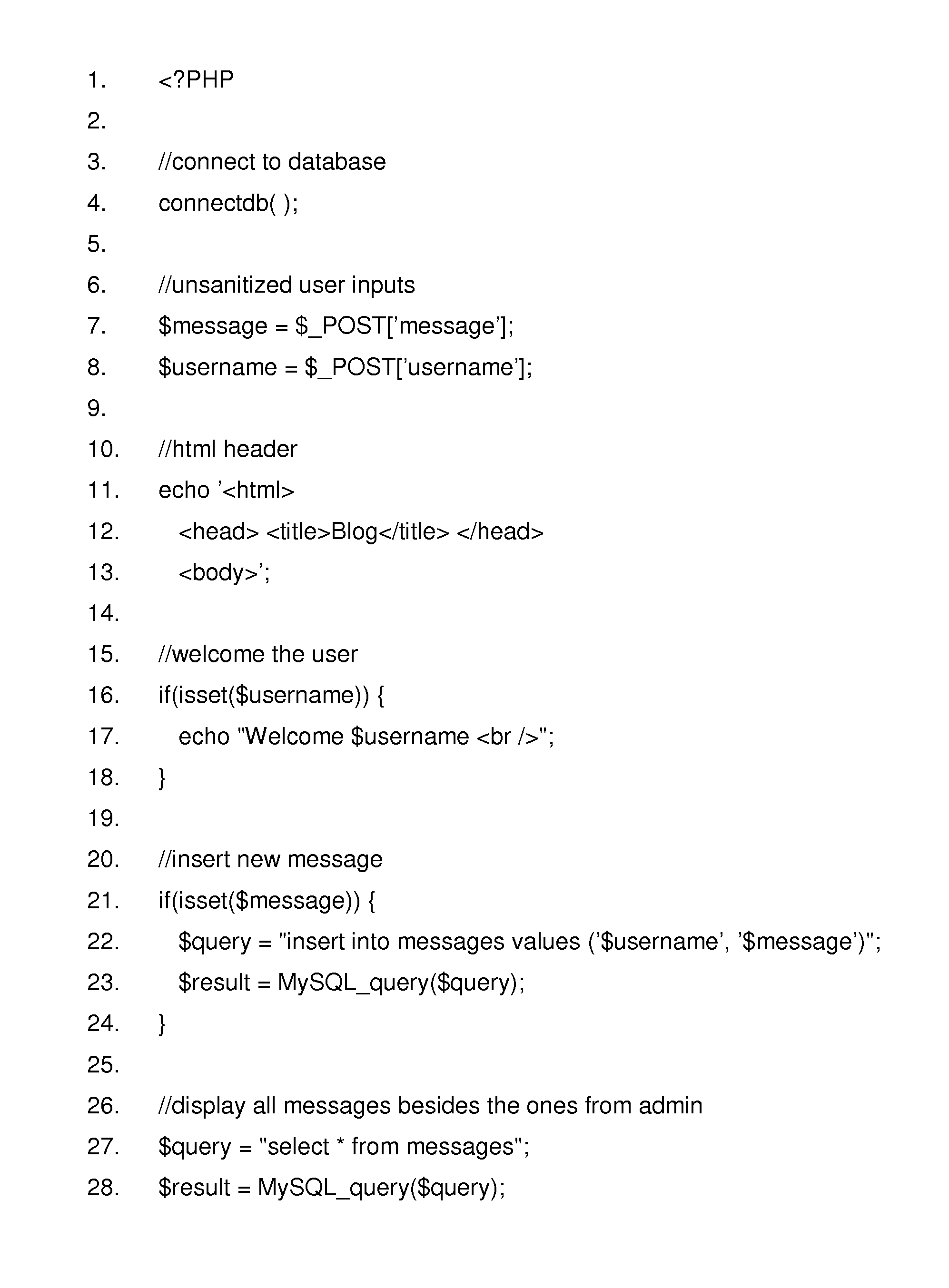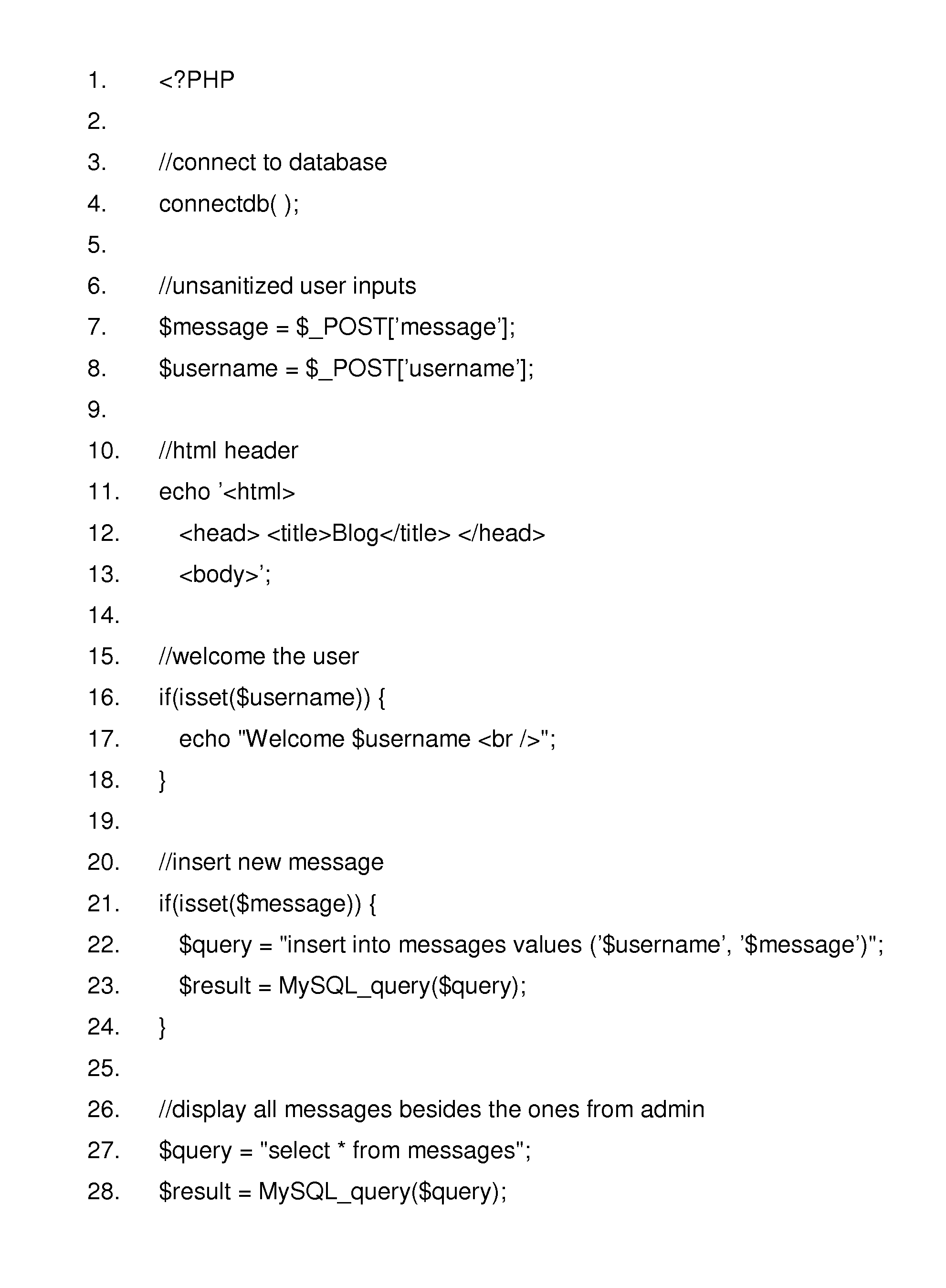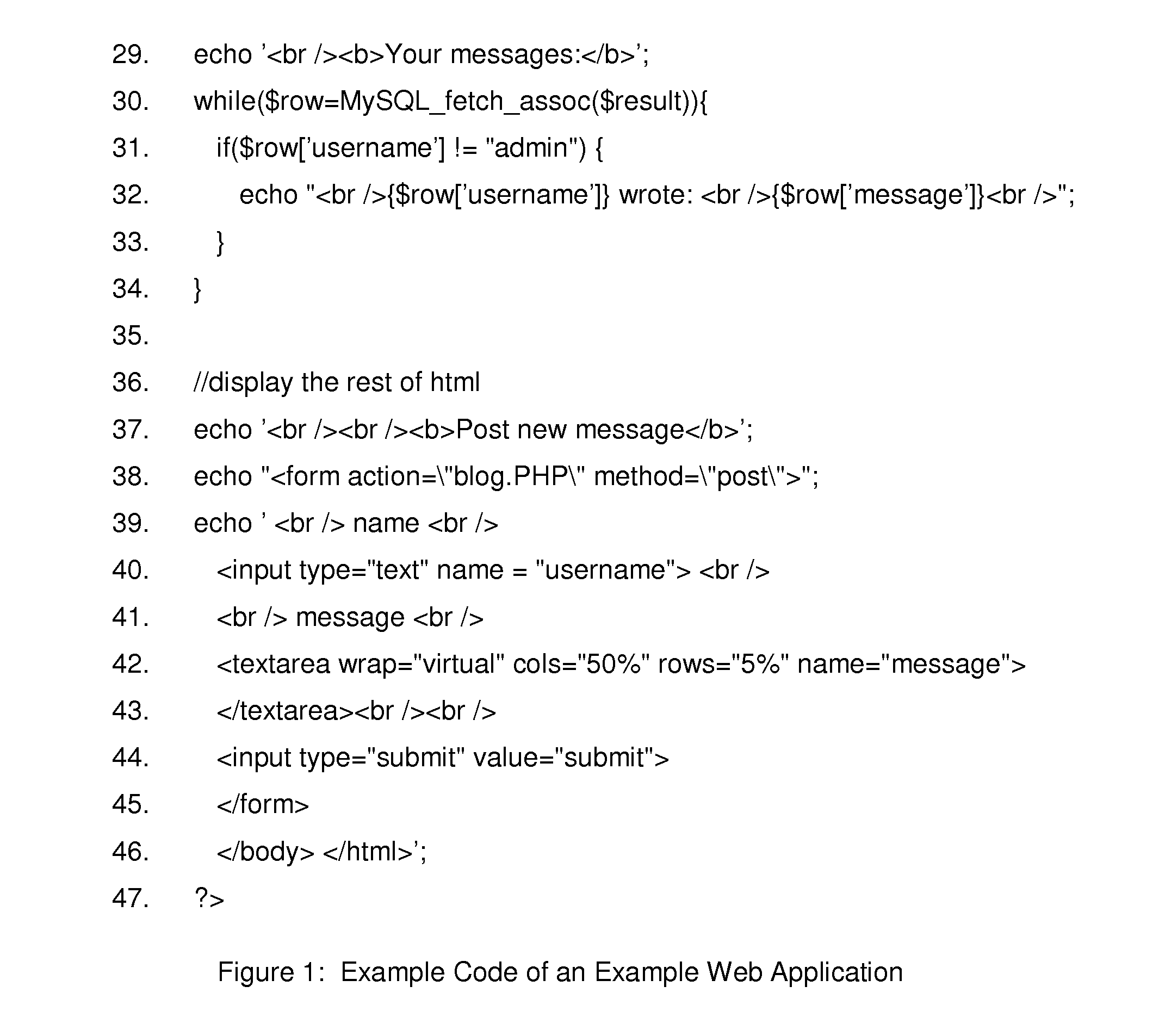Complementary Character Encoding for Preventing Input Injection in Web Applications
a technology of input injection and character encoding, applied in the direction of program control, unauthorized memory use protection, instruments, etc., can solve the problems of dire consequences, manual applications of input validation becoming impractical, and difficult to do, so as to prevent the execution of malicious user inputs as code, and the overhead is low
- Summary
- Abstract
- Description
- Claims
- Application Information
AI Technical Summary
Benefits of technology
Problems solved by technology
Method used
Image
Examples
case three
[0034 is an example of a reflected cross site scripting attack. The unsanitized user input (a script) is included in the HTML at line 17. When the HTML is parsed by the browser, it will recognize the script tags and send the enclosed script to its Javascript engine, which will parse it and execute it. In this case the script redirects the user to another website. An attacker can exploit this by inducing users to provide inputs like case three, causing redirection to another malicious web page which steal personal information, etc.
[0035]Case four is an example of a persistent cross site scripting attack. At line 23, the unsanitized attack script is stored in the database. It is later displayed to any user visiting the application when lines 27 to 34 are executed. This is a more severe form of cross site scripting because it affects everyone visiting the web page.
2. Complementary Character Coding
[0036]In complementary character coding, each character is encoded with two code points in...
case four
[0079 is the same as case three except that the attack string is stored in the database as well. Like before, the input does not match any tokens in SQL or any HTML tags under full comparison during parsing. The string is stored literally in the database and is displayed literally on the web browser.
[0080]This example only shows the prevention of SQL injection and cross-site scripting; however, it is important to note that our technique is designed to be general and it can be used against other types of web application injections as well.
[0081]With complementary character coding, wherever user input is being used to construct statements in a language that is interpreted by other components (XML interpreters, eval, etc), security policies for those components can be defined and complement aware versions of the component can be implemented to prevent injection attacks.
5. Implementation
[0082]We now describe our proof of concept implementation of LAMP (Linux Apache MySQL PHP) with compl...
PUM
 Login to View More
Login to View More Abstract
Description
Claims
Application Information
 Login to View More
Login to View More - R&D
- Intellectual Property
- Life Sciences
- Materials
- Tech Scout
- Unparalleled Data Quality
- Higher Quality Content
- 60% Fewer Hallucinations
Browse by: Latest US Patents, China's latest patents, Technical Efficacy Thesaurus, Application Domain, Technology Topic, Popular Technical Reports.
© 2025 PatSnap. All rights reserved.Legal|Privacy policy|Modern Slavery Act Transparency Statement|Sitemap|About US| Contact US: help@patsnap.com



